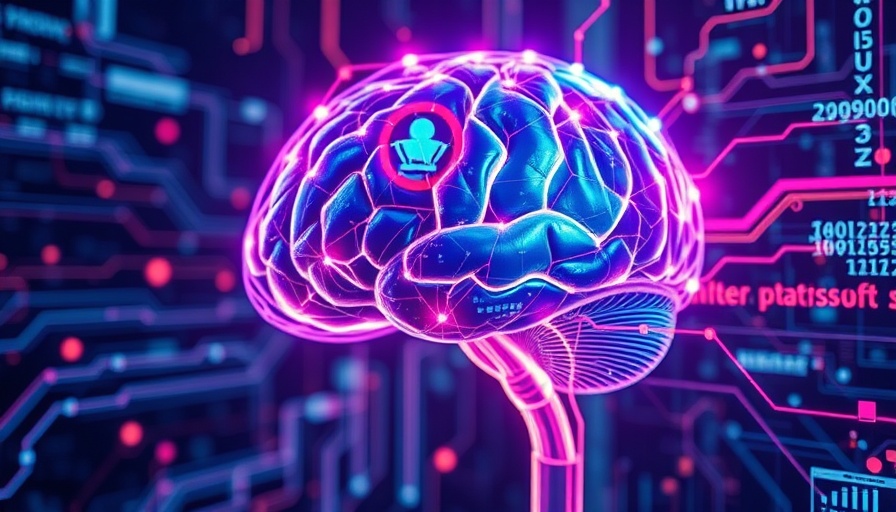
Unlocking the Future of Neurotechnology: A Major Breakthrough
In an extraordinary development, researchers at the University of California San Francisco have successfully enabled a paralyzed man to control a robotic arm using only his thoughts. This groundbreaking innovation represents a significant leap in the realm of brain-computer interfaces (BCIs), building on years of research aimed at restoring movement for individuals with paralysis.
The Power of Imagination: How It Works
The device utilized by the researchers operates through a system of sensors placed on the surface of the brain, which track the participant's brain signals as he imagines moving different parts of his body. This innovative application of neurotechnology allows users to grasp, move, and manipulate objects simply by envisioning the actions.
The game-changing aspect of this technology is its reliance on artificial intelligence to adapt to daily variations in brain activity. Unlike previous BCIs that often malfunctioned after mere days, this device showed unprecedented reliability, functioning effectively for a record seven months without recalibration. Dr. Karunesh Ganguly, the leading neurologist behind the study, emphasized that the AI learns to refine its accuracy over time, echoing the nuances of human learning.
Real-World Applications: Beyond the Lab
This significant advancement underlines how neurotechnology can drastically change the daily lives of individuals with disabilities. For example, the study participant, who had been paralyzed due to a stroke, demonstrated the ability to control a robotic arm that could perform essential tasks, such as picking up blocks and even pouring water from a dispenser. As practical applications of this technology grow, it paves the way for individuals with paralysis to regain a degree of independence in their daily lives.
Adaptive Technology: Responding to Brain Changes
What sets this study apart from previous attempts is the discovery that brain activity patterns can shift from day to day as individuals engage in repetitive movements or even when simply imagining them. This finding allowed researchers to enhance the BCI's performance significantly, and they anticipate that further refinements could lead to smoother and faster robotic arm movements.
These adaptations mark an important step forward: the blending of human learning and artificial intelligence is crucial for developing sophisticated neuroprosthetics. It reflects a new era where technology can augment human capability in previously unimaginable ways.
The Road Ahead: Future Predictions and Insights
Looking forward, the implications of this research stretch far beyond aiding those with mobility issues. The adaptability and accuracy of the device suggest potential applications in diverse areas, from robotic surgery to virtual reality control. Moreover, as the technology continues to evolve, the possibility arises for broader usage beyond medical environments to everyday consumer technology, affecting the tech-driven industries and providing new marketing avenues.
Indeed, the prospect of non-invasive brain-computer interfaces could challenge existing paradigms. Imagine a world where robotic assistants become part of everyday life, operated seamlessly by the user's thoughts. Such advancements could lead to products and services tailored to everyone, creating a market for innovative tech solutions while improving the quality of life for millions.
Counterarguments and Diverse Perspectives
While the promise of this technology is significant, it is essential to address potential counterarguments. One concern revolves around the ethical implications of mind-controlled devices, including privacy issues and the potential misuse of such technology. Additionally, as companies explore these advancements, regulatory frameworks must evolve to ensure safety and ethical integrity.
Critics may also cite concerns over the accessibility of this technology—who will benefit from these innovations? Will they remain within the reach of those who can afford specialized medical care? Addressing these disparities will be crucial to ensuring equitable access to neurotechnology’s benefits as it evolves.
Conclusion: Empowering Change Through Innovation
This pioneering research represents a monumental shift in our understanding of neurology and technology. By bridging the gap between thought and action, it holds the potential to transform the lives of individuals with paralysis, giving them greater agency over their daily activities. For those in leadership positions within the tech and healthcare sectors, now is the time to consider how your organizations can play a role in advancing and implementing these technologies responsibly.
With the promise of neurotechnology becoming a reality, it’s vital to remain informed about these developments. Explore how this innovation could impact your industry and the lives of those around you. The intersection of technology and wellness is not only about improving functionality but also about enhancing the human experience.
For business professionals eager to stay ahead of this curve, consider how innovations like the brain-computer interface could change your strategies and the markets you operate in. The future is just beginning—let us be part of it.
 Add Row
Add Row  Add
Add 




Write A Comment